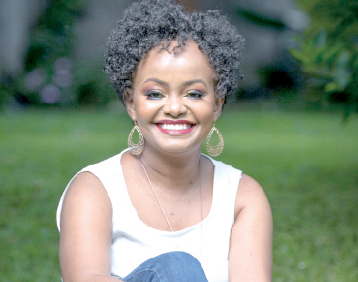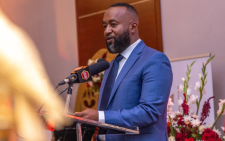Vision boards and why your child needs one

This year, you may have drafted your vision board to keep your goals in plain sight. But it may not have occurred to you that a vision board can also work for your children and can be a tool to help them visualise (and realise) their goals.
A vision board is a visual representation of your goals. It consists of various images, words, and even 3D objects that symbolise what you would like to see in your future.
Emily Kinuthia, founder and vision board coach at Actualeyezit knew how vital it was to train her children from an early age on issues, such as how to articulate their desires and develop clarity around the things that are important to them.
“Vision boards supports children’s overall growth. It also helps children define their own success, without the conventional success measures that the world defines for us. Gone are the days when success was defined purely by your academic abilities,” she explains.
Working with different age groups
Over the last two years, Emily has worked with her daughter and niece aged eight and 16 years on their own vision boards and the results have been astonishing. At first, she was surprised at how easy it was for them to grasp the concept and their enthusiasm around the exercise.
“The key learning from this experience was that I needed to segment my vision boarding across the different age brackets as they have different levels of understanding. I therefore, engaged in developing programmes that were suitable for the younger children aged seven years to 11 years and 12 years to 16 years with the help of a psychologist and some online resources,” she continues.
Starting it out with her children opened the door for her to receive various requests with groups of children across different age brackets. As she engaged the different groups, Emily quickly learned that younger children have a uninhibited mind set and approach to life and were more open to dream big with ease, while the pre-teens and teenagers tend to be a lot more self-conscious.
“They are more self-aware of their strengths and weakness and a bit more aware of their capabilities and this could be self-limiting. I had to develop two sets of programmes that would be fit for the different age brackets as I had different territories of mind-sets to navigate and needed to ensure the objective of developing a visual representation of their highest dreams and goals was achieved at the end of the exercise for the different groups,” she explains.
Journey of self-discovery
In her programme with her children and those she trains, Emily developed the 3D approach, which entails a discovery session. Here, children explore who they are and what matters to them, followed by the development session where they visualise their highest achievements across various areas of their life. Lastly, is the drive session where she set actionable goals. For the pre-teens and teens, the activities start with an online assessment developed by a psychologist. These are geared towards establishing a baseline for their key competencies helping them identify, understand and strengthen core internal abilities that help them thrive holistically in life.
“I appreciate that pre-teens and adolescents go through an interior journey of self – discovery and growth – the integration of mind, body, heart and spirit. Through this assessment that is scientifically proven, we are able to develop core strengths and drivers of personal, academic, career and life success. When these abilities are nurtured in children, they grow to become caring family members, innovative workers, ethical leaders and engaged citizens,” she says.
Emily also engages them on a self-awareness activity and finally a vision boarding session where they set and develop their visual representation of their dreams.
“The key to the success of vision boarding for children is a strong accountability or support system to help them achieve the goals they set for themselves. While it is easy to dream and come up with your highest dreams and goals, the real work is in translating this to actionable goals that they can apply on a day to day basis and this calls for a strong support system in their home and or school environment,” she continues.
She is glad that the vision boards have assisted her own daughter and niece transform. One of the key areas of transformation is the commitment to the goals they have set.
“I have hardly had to remind my daughter to practice her spelling or math purely because she has set the goal to excel in these areas and is well motivated to achieve it. My niece who just recently finished her A levels has her eyes set for a top international university and is already being interviewed for the same. All these were dreams they set on their vision boards a year ago,” Emily shares.
One of the challenges that parents face is the lack of awareness around what their children know and what they are exposed to. “Our children know a lot, thanks to the exposure through the Internet and they may not display this knowledge outrightly or openly to their parents and guardians,” she says.
Emily notes that having a vision board for your child helps parents have a closer walk with their children that goes beyond just doing homework together, reading a bed time story and praying every evening.
“It helps you understand what really matters to your child, what their passions are, what their fears and worries are and it gives you an opportunity to support their growth journey positively,” she explains.
She plans to roll out an online resource for children this year that will avail a wealth of resources for parents, guardians and children to work on their visions boards. Emily has also planned a few exciting vision board parties for both adults and children to help engage a wider audience and drive a wider understanding of vision boarding. She shares how vision boards is a useful life tool that gives children a sense of focus.












